Utilize this comprehensive nursing care plan and management guide to provide effective care for patients with chronic obstructive pulmonary disease (COPD). Gain valuable insights on nursing assessment, interventions, goals, and nursing diagnosis specifically tailored for COPD in this guide.
What is Chronic Obstructive Pulmonary Disease (COPD)?
Chronic Obstructive Pulmonary Disease (COPD) is a common, preventable, and treatable disease that is characterized by persistent respiratory symptoms and airflow limitation that is due to airway and/or alveolar abnormalities, usually caused by significant exposure to noxious particles or gases. As with previous editions, the 2018 Global Initiative for Chronic Obstructive Pulmonary Disease (GOLD) update seeks to provide comprehensive evidence-based guidelines for the diagnosis, management, and prevention of COPD (Mirza et al., 2018).
COPD is a heterogeneous lung condition characterized by chronic respiratory symptoms of dyspnea, cough, sputum production, and exacerbations due to abnormalities of the airways such as bronchitis and/or alveoli that cause persistent, often progressive, airflow obstruction, such as in emphysema (Global Initiative for Chronic Obstructive Lung Disease, 2022).
COPD is a progressive disease that affects the lungs and is associated with chronic inflammation and abnormal inflammatory responses to harmful particles or gases. It leads to narrowing of the airways and changes in lung parenchyma and pulmonary vasculature. In the airways, there are increased mucus production, thickening of the airway wall, and overall narrowing. In the lung parenchyma, alveolar wall destruction and loss of elastic recoil occur. Imbalances of substances in the lung, such as proteinases, can further contribute to airflow limitation. These changes can be influenced by factors like chronic inflammation, environmental exposures, and genetic factors like alpha1-antitrypsin deficiency.
Asthma: Also known as chronic reactive airway disease, asthma is characterized by reversible inflammation and constriction of bronchial smooth muscle, hypersecretion of mucus, and edema. Precipitating factors include allergens, emotional upheaval, cold weather, exercise, chemicals, medications, and viral infections.
Chronic bronchitis: Widespread inflammation of airways with narrowing or blocking of airways, increased production of mucoid sputum and marked cyanosis.
Emphysema: A most severe form of COPD, characterized by recurrent inflammation that damages and eventually destroys alveolar walls to create large blebs or bullae (air spaces) and collapsed bronchioles on expiration (air-trapping).
A diagnosis of COPD should be considered in any client who has dyspnea, chronic cough or sputum production, a history of recurrent lower respiratory tract infections, and/or a history of exposure to risk factors for the disease, but forced spirometry showing the presence of a post-bronchodilator FEV1/FVC <0.7 is mandatory to establish the diagnosis of COPD (Global Initiative for Chronic Obstructive Lung Disease, 2022).
In the presence of an FEV1/FVC ratio <0.7, the assessment of airflow limitation severity in COPD is based on the post-bronchodilator value of FEV1. The GOLD Grades and Severity of Airflow Obstruction in COPD staging are as follows:
- GOLD 1: Mild (FEV1 >80% predicted)
- GOLD 2: Moderate (50% ≤ FEV1 <80% predicted)
- GOLD 3: Severe 30% ≤ FEV1 <50% predicted)
- GOLD 4: Very severe (FEV1 <30% predicted)
COPD results from gene(G)-environment(E) interactions occurring over the lifetime(T) of the individual (GETomics) that can damage the lungs and/or alter their normal development or aging processes. Appropriate and earlier diagnosis of COPD can have a very significant public-health impact.
Nursing care planning for clients diagnosed with COPD involves the introduction of a treatment regimen to relieve symptoms and prevent complications. Most clients diagnosed with COPD receive outpatient treatment, and the nurse should develop a teaching plan to help them comply with the therapy and understand the nature of this chronic disease.
For a comprehensive pathophysiology, medical and surgical management, please visit the Chronic Obstructive Pulmonary Disease (COPD) nursing study guide
Nursing Care Plans & Management
Management of patients with COPD should be incorporated with teaching and improving the respiratory status of the patient.
Nursing Problem Priorities
The following are the nursing priorities for patients with COPD:
- Maintain airway patency.
- Assist with measures to facilitate gas exchange.
- Enhance nutritional intake.
- Prevent complications, slow progression of condition.
- Provide information about disease process/prognosis and treatment regimen.
Nursing Assessment
COPD is a progressive disease characterized by chronic cough, sputum production, and worsening dyspnea. It can lead to weight loss and respiratory complications. Advanced stages may cause changes in the thorax and have systemic manifestations. Assessment and treatment of these symptoms are crucial for improving quality of life.
Assess for the following subjective and objective data:
- Difficulty breathing
- Changes in depth/rate of respirations, use of accessory muscles
- Abnormal breath sounds, e.g., wheezes, rhonchi, crackles
- Persistent cough, with/without sputum production
- Confusion, restlessness
- Inability to move secretions
- Abnormal ABG values (hypoxia and hypercapnia)
- Changes in vital signs
- Reduced tolerance for activity
- Wheezes/crackles on auscultation in both lung fields
- Subcostal retraction
- Nasal flaring
- Tachypnea, dyspnea
- Exertional dyspnea
- Shortness of breath
- Excessively increased or decreased respiratory rate
Assess for factors related to the cause of COPD:
- Bronchospasm
- Increased production of secretions; retained secretions; thick, viscous secretions
- Hyperplasia of bronchial walls
- Decreased energy/fatigue
- Altered oxygen supply (obstruction of airways by secretions, bronchospasm; air-trapping)
- Alveoli destruction or capillary membrane changes
- Retained secretions
- Ineffective inspiration and expiration occurring with chronic airflow constraints
- Increased metabolic demands
Nursing Diagnosis
Following a thorough assessment, a nursing diagnosis is formulated to specifically address the challenges associated with COPD based on the nurse’s clinical judgement and understanding of the patient’s unique health condition. While nursing diagnoses serve as a framework for organizing care, their usefulness may vary in different clinical situations. In real-life clinical settings, it is important to note that the use of specific nursing diagnostic labels may not be as prominent or commonly utilized as other components of the care plan. It is ultimately the nurse’s clinical expertise and judgment that shape the care plan to meet the unique needs of each patient, prioritizing their health concerns and priorities.
Nursing Goals
Goals and expected outcomes may include:
- The client will maintain clear and patent airways, demonstrating effective breath sounds and the ability to effectively cough and clear secretions.
- The client will achieve improved ventilation and optimal tissue oxygenation, as evidenced by ABG values within the normal range and the absence of respiratory distress symptoms.
- The client will demonstrate improved breathing patterns, maintaining a normal respiratory rate, and be free from cyanosis and other signs of hypoxia.
Nursing Interventions and Actions
Therapeutic interventions and nursing actions for patients with COPD may include:
1. Maintaining Patent Airway Clearance
Common to many pulmonary diseases is bronchospasm which reduces the caliber of the small bronchi and may cause difficulty in breathing, stasis of secretions, and infection. Mucous gland hyperplasia is the histologic hallmark of chronic bronchitis. Airway structural changes include atrophy, focal squamous metaplasia, ciliary abnormalities, variable amounts of airway smooth muscle hyperplasia, inflammation, and bronchial wall thickening. These changes cause airflow limitation by allowing airway walls to deform and narrow the airway lumen (Mosenifar & Oppenheimer, 2022).
Assess and monitor respirations and breath sounds, noting rate and sounds (tachypnea, stridor, crackles, wheezes). Note the inspiratory and expiratory ratio.
Tachypnea is usually present to some degree and may be pronounced on admission or during stress or concurrent acute infectious process. Respirations may be shallow and rapid, with prolonged expiration in comparison to inspiration. Wheezing can be frequently heard on forced and unforced expiration with diffusely decreased breath sounds. Additionally, coarse crackles beginning with inspiration may be heard (Mosenifar & Oppenheimer, 2022).
Auscultate breath sounds. Note adventitious breath sounds (wheezes, crackles, rhonchi).
Some degree of bronchospasm is present with obstructions in the airway and may or may not be manifested in adventitious breath sounds such as scattered, moist crackles (bronchitis); faint sounds, with expiratory wheezes (emphysema); or absent breath sounds (severe asthma). Inspiratory or expiratory wheezes and chest tightness are symptoms that may vary between days, and over the course of a single day. Alternatively, widespread inspiratory or expiratory wheezes can be present during auscultation (Global Initiative for Chronic Obstructive Lung Disease, 2022).
Note the presence and degree of dyspnea for reports of “air hunger” or breathlessness.
Respiratory dysfunction is variable depending on the underlying process such as infection, allergic reaction, and the stage of chronicity in a client with established COPD. Chronic dyspnea is the most characteristic symptom of COPD. A dyspnea questionnaire, the modified Medical Research Council (mMRC) dyspnea scale was the first questionnaire developed to measure breathlessness, which is a key symptom in many clients diagnosed with COPD, although it is often recognized (Global Initiative for Chronic Obstructive Lung Disease, 2022).
Observe signs and symptoms of infections.
Acute exacerbations of COPD are common and usually occur due to a trigger, such as bacterial or viral pneumonia or environmental irritants. There is an increase in inflammation and air trapping often requiring corticosteroid and bronchodilator treatment (Agarwal, 2022).
Monitor and graph serial ABGs, pulse oximetry, and chest x-ray.
This establishes a baseline for monitoring the progression or regression of disease process complications. ABG analysis provides the best clues as to the acuteness and severity of disease exacerbation. Frontal and lateral chest radiographs of clients diagnosed with emphysema reveal signs of hyperinflation, including flattening of the diaphragm and increased retrosternal air space. And a long, narrow heart shadow. Chronic bronchitis is associated with increased bronchovascular markings and cardiomegaly (Mosenifar & Oppenheimer, 2022).
Observe for persistent, hacking, or moist cough.
Chronic cough is often the first symptom of COPD and is frequently discounted by the client as an expected consequence of smoking and/or environmental exposures. Initially, the cough may be intermittent, but subsequently, it may be present every day, often throughout the day. Chronic cough in COPD may be productive or unproductive. In some cases, significant airflow obstruction may develop without the presence of a cough (Global Initiative for Chronic Obstructive Lung Disease, 2022).
Educate the client regarding smoking cessation.
A significant proportion of people with COPD continue to smoke despite knowing that they have a disease, and this behavior has a negative impact on the prognosis and progression of the disease. Smoking cessation has the greatest capacity to influence the natural history of COPD. If effective resources and time are dedicated to smoking cessation, long-term quit success rates of up to 25% can be achieved (Global Initiative for Chronic Obstructive Lung Disease, 2022).
Provide an incentive spirometer for the measurement of airflow obstruction.
Forced spirometry is the most reproducible and objective measurement of airflow obstruction. It is a non-invasive, reproducible, cheap, and readily available test. Good quality spirometry measurement is possible in any healthcare setting and all healthcare workers who care for people with COPD should have access to spirometry. The spirometry criterion for airflow obstruction selected by GOLD remains a post-bronchodilator ratio of FEV1/FVC <0.7 (Global Initiative for Chronic Obstructive Lung Disease, 2022).
Assist the client to assume a position of comfort (elevate the head of the bed, have the client lean on an overbed table, or sit on edge of the bed).
Elevation of the head of the bed facilitates respiratory function by use of gravity; however, the client in severe distress will seek the position that most eases breathing. Supporting arms and legs with a table, pillows, and so on helps reduce muscle fatigue and can aid chest expansion.
Keep environmental pollution to a minimum such as dust, smoke, and feather pillows, according to the individual situation.
Precipitators of an allergic type of respiratory reaction that can trigger or exacerbate the onset of an acute episode. COPD does occur in individuals who have never smoked. In developing countries, the use of biomass fuels for indoor cooking and heating is likely to be a major contributor to the worldwide prevalence of COPD. Long-term exposure to traffic-related air pollution may be a factor in COPD clients with diabetes and asthma (Mosenifar & Oppenheimer, 2022).
Encourage abdominal or pursed-lip breathing exercises.
This provides the client with some means to cope with or control dyspnea and reduce air trapping. Breathing exercises, as a self-management intervention strategy, are complex and diverse. They have been reported to not only effectively improve the strength and endurance of respiratory muscles and correct abnormal chest and abdomen movements but they also reduce dyspnea and pulmonary dynamic hyperinflation (Li et al., 2020).
Assist with measures to improve the effectiveness of cough effort.
Cough can be persistent but ineffective, especially if the client is elderly, acutely ill, or debilitated. Coughing is most effective in an upright or in a head-down position after chest percussion. Effective or controlled coughing has just enough force to loosen and carry mucus through the airways without causing them to narrow and collapse. This saves energy for clients diagnosed with COPD (Cleveland Clinic, 2018).
Increase fluid intake to 3000 mL per day within cardiac tolerance. Provide warm or tepid liquids. Recommend the intake of fluids between, instead of during, meals.
Hydration helps decrease the viscosity of secretions, facilitating expectoration. Using warm liquids may decrease bronchospasm. Fluids during meals can increase gastric distension and pressure on the diaphragm.
Demonstrate effective coughing and deep-breathing techniques.
Not all coughs are effective in clearing excess mucus from the lungs. Explosive or uncontrolled coughing causes airways to collapse and spasm, trapping the mucus. To cough effectively, the client should be sitting on a chair and leaning forward slightly. Both arms should be folded across the abdomen and a slow inhalation through the nose is done. The client should cough two to three times through a slightly open mouth. Coughs should be short and sharp (Cleveland Clinic, 2018).
Assist the client to turn every two hours. If ambulatory, allow the client to ambulate as tolerated.
Movement aids in mobilizing secretions to facilitate the clearing of airways. Aerobic activities such as walking can help improve cardiorespiratory fitness by strengthening large muscle groups in the body. Although exercise does not directly improve lung function, it can help strengthen the muscles which helps build up the client’s endurance level (Leader, 2022).
Suction secretions as needed.
Suctioning clear secretions that obstruct the airway, therefore, improves oxygenation. Using bronchoscopy to remove sputum is an effective way during invasive ventilation in respiratory failure clients with advanced exacerbation of COPD. Study shows that bronchoscopy sputum suction presents more encouraging results than negative pressure suction with a low mortality rate (Qiao et al., 2018).
Demonstrate chest physiotherapies, such as bronchial tapping when in cough, and proper postural drainage.
These techniques will prevent possible aspiration and prevent any untoward complications. Postural drainage and deep breathing-coughing exercises, which are part of the pulmonary rehabilitation program in the care and management of COPD, are effective in increasing oxygen saturation, triFlo volume, and pulmonary function tests (Arik & Cevik, 2021).
Administer medications as prescribed.
See pharmacologic interventions below.
2. Promoting Effective Gas Exchange & Oxygen Therapy
The quantity and viscosity of sputum can obstruct the airway and impair pulmonary ventilation and gas exchange. Emphysema is a pathologic diagnosis defined by the permanent enlargement of airspaces distal to the terminal bronchioles. This leads to a dramatic decline in the alveolar surface area available for gas exchange. Furthermore, the loss of alveoli leads to airflow limitation by two mechanisms. First, the loss of the alveolar walls results in a decrease in elastic recoil, which leads to airflow limitation. Second, the loss of alveolar supporting structure leads to airway narrowing, which further limits airflow (Mosenifar & Oppenheimer, 2022).
Assess and record respiratory rate, and depth. Note the use of accessory muscles, pursed-lip breathing, and inability to speak or converse.
This is useful in evaluating the degree of respiratory distress or chronicity of the disease process. The respiratory rate increases in proportion to disease severity. The use of accessory respiratory muscles and the paradoxical indrawing of lower intercostal spaces is evident. This manifestation is known as the Hoover sign (Mosenifar & Oppenheimer, 2022).
Assess and routinely monitor skin and mucous membrane color.
Cyanosis may be peripheral (noted in nail beds) or central (noted around lips/or earlobes). Duskiness and central cyanosis indicate advanced hypoxemia. Clients diagnosed with chronic bronchitis are referred to as “blue bloaters” because the body responds to the disease by decreasing ventilation and increasing cardiac output. This ventilation/perfusion mismatch results in rapid circulation in a poorly ventilated lung, leading to hypoxemia and polycythemia. Eventually, hypercapnia and respiratory acidosis develop. With the ensuing hypoxemia and increased CO2 retention, the client takes on a bluish tint to the skin, earning them the name of “blue bloaters” (Mosenifar & Oppenheimer, 2022).
Monitor changes in the level of consciousness and mental status.
Restlessness, agitation, and anxiety are common manifestations of hypoxia. Worsening ABGs accompanied by confusion/ somnolence are indicative of cerebral dysfunction due to hypoxemia. Symptoms of depression and/or anxiety merit specific inquiry when obtaining the medical history because they are common in COPD, are associated with poorer health status, increased risk of exacerbations, and emergency hospital admissions, and are treatable (Global Initiative for Chronic Obstructive Lung Disease, 2022).
Monitor vital signs and cardiac rhythm.
Tachycardia, dysrhythmias, and changes in BP can reflect the effect of systemic hypoxemia on cardiac function. A client diagnosed with chronic bronchitis may have signs of right-sided heart failure such as edema and cyanosis. A client diagnosed with emphysema may have very distant heart sounds due to the gradual destruction of alveolar septae and pulmonary capillary bed, leading to a decreased ability to oxygenate the blood. This results in low cardiac output and relatively limited blood flow to the rest of the body (Mosenifar & Oppenheimer, 2022).
Auscultate breath sounds, noting areas of decreased airflow and adventitious sounds.
Breath sounds may be faint because of decreased airflow or areas of consolidation. The presence of wheezes may indicate bronchospasm or retained secretions. Scattered moist crackles may indicate interstitial fluid or cardiac decompensation. An absence of wheezing or chest tightness does not exclude a diagnosis of COPD, nor does the presence of these symptoms confirm a diagnosis of asthma (Global Initiative for Chronic Obstructive Lung Disease, 2022).
Palpate for fremitus.
A decrease in vibratory tremors suggests fluid collection or air-trapping. Decreased intensity of tactile fremitus may occur as a result of excessive amounts of air in the lungs, known as hyperinflation. Hyperinflation is commonly seen in clients diagnosed with pulmonary emphysema, COPD, asthma, or severe airway obstruction (Hernández, 2022).
Monitor O2 saturation and titrate oxygen to maintain Sp02 between 88% to 92%.
A pulse oximetry reading of 87% below may indicate the need for oxygen administration while a pulse oximetry reading of 92% or higher may require oxygen titration. However, pulse oximetry does not offer as much information as ABG analysis. But when combined with clinical observation, this test can be a powerful tool for instant feedback on the client’s status (Mosenifar & Oppenheimer, 2022).
Monitor arterial blood gas values as ordered.
ABG analysis provides the best clues as to the acuteness and severity of disease exacerbation. As the client’s condition progresses, Pa02 usually decreases. A client with chronic carbon dioxide retention may have chronically compensated respiratory acidosis with a low normal pH and a PaCo2 higher than 50 mm Hg. Generally, renal compensation occurs even in chronic CO2 retainers; thus pH usually is near normal. Any pH below 7.3 should be generally considered a sign of acute respiratory compromise (Mosenifar & Oppenheimer, 2022).
Evaluate the client’s level of activity tolerance.
Fatigue is the subjective feeling of tiredness or exhaustion and is one of the most common and distressing symptoms experienced by people diagnosed with COPD. Fatigue impacts the ability of the client to perform activities of daily living and their quality of life (Global Initiative for Chronic Obstructive Lung Disease, 2022).
Assess the characteristics of sputum produced.
Sputum production can be intermittent with periods of flare-up interspersed with periods of remission. COPD clients commonly raise small quantities of tenacious sputum with coughing. Clients producing large volumes of sputum may have underlying bronchiectasis. The presence of purulent sputum reflects an increase in inflammatory mediators, and its development may identify the onset of a bacterial exacerbation (Global Initiative for Chronic Obstructive Lung Disease, 2022).
Encourage expectoration of sputum; suction when needed.
Thick, tenacious, copious secretions are a major source of impaired gas exchange in small airways. Deep suctioning may be required when the cough is ineffective for the expectoration of secretions. In clients diagnosed with acute exacerbation of COPD, sputum accumulates in the lower airways and will inevitably cause severe respiratory obstruction, atelectasis, and pulmonary infection. However blind negative pressure aspiration can damage the airway mucosa and leave sputum in place, worsening the client’s condition. Removing sputum under bronchoscopy could allow the precise removal of all sputum while minimizing mucosa damage (Qiao et al., 2018).
Elevate the head of the bed, and assist the client to assume a position to ease the work of breathing. Include periods of time in a prone position as tolerated.
Oxygen delivery may be improved by upright position and breathing exercises to decrease airway collapse, dyspnea, and work of breathing. Use of prone position to increase Pao2. A study found that there is a significant improvement in resistance in the prone position in infants and children with obstructive diseases. Prone positioning can be associated with lower resistance values and could have a role in the clinical management of highly obstructed clients as it reduces time constants of the respiratory system (Vendettuoli et al., 2014).
Encourage deep-slow or pursed-lip breathing as individually needed or tolerated.
A study found that pursed lip breathing exercises increased oxygen saturation rates in clients diagnosed with moderate to severe COPD. Pulmonary rehabilitation includes physical education programs consisting of client education, psychosocial support, aerobic and empowering exercises, and breathing exercises. Collaborative self-management strategies such as performing regular breathing exercises can be effective in the early and appropriate treatment of COPD exacerbations (Arik & Cevik, 2021).
Provide a calm, quiet environment. Limit the client’s activity or encourage bed or chair rest during the acute phase. Have the client resume activity gradually and increase as individually tolerated.
During severe, acute, or refractory respiratory distress, the client may be totally unable to perform basic self-care activities because of hypoxemia and dyspnea. Rest interspersed with care activities remains an important part of the treatment regimen. An exercise program is aimed at increasing endurance and strength without causing severe dyspnea and can enhance a sense of well-being.
Evaluate sleep patterns, note reports of difficulties, and whether the patient feels well rested. Limit stimulants such as caffeine.
Multiple external stimuli and the presence of dyspnea may prevent relaxation and inhibit sleep. Poor sleep quality in COPD clients has been reported in various studies with prevalence ranging from 40% to 75%. COPD symptoms such as cough and dyspnea may be responsible for poor sleep quality. Alternatively, disturbed sleep can contribute to poor COPD-related outcomes (Shah et al., 2020).
Provide humidified oxygen as ordered.
Administering humidified oxygen prevents drying out the airways, decreases convective moisture losses, and improves compliance. Oxygen administration also reduces mortality rates in clients with advanced COPD because of the favorable effects on pulmonary hemodynamics. The continuous-flow nasal cannula is the standard means of oxygen delivery for the stable hypoxemic client. It is simple, reliable, and generally well-tolerated. Nasal oxygen delivery is also beneficial for most mouth-breathing clients (Mosenifar & Oppenheimer, 2022).
Administer noninvasive positive pressure ventilation (NIPPV) as ordered.
The use of noninvasive positive pressure ventilation can decrease PacO2, increase blood pH, and minimize symptoms of severe dyspnea during the first 4 hours of the treatment.NIPPV allows the delivery of positive-pressure ventilation without the use of an endotracheal tube. In place of the tube is a tight-fitting nasal or facial mask that is attached to a continuous positive airway pressure (CPAP) or a bilevel positive airway pressure (BiPAP) machine (Mosenifar & Oppenheimer, 2022).
Refer the client to pulmonary rehabilitation.
A systematic review of RCTs reported a reduction in mortality for clients who had pulmonary rehabilitation initiated during hospitalization or four weeks after discharge compared to those who didn’t have pulmonary rehabilitation. Pulmonary rehabilitation improves dyspnea, health status, and exercise tolerance in stable clients (Global Initiative for Chronic Obstructive Lung Disease, 2022).
Assist with surgical procedures such as lung transplantation and lung volume reduction surgery (LVRS).
In LVRS, 20 to 30% of each lung that appeared most diseased is resected. The investigators hypothesized that the removal of a portion of the emphysematous lung would increase radial traction on the airways in the remaining lung, thereby reducing symptoms by improving expiratory airflow and mechanical function. Several studies have demonstrated significant benefits in spirometry, exercise tolerance, dyspnea, health-related quality of life, and mortality in selected clients after LVRS. Clients with COPD are the largest single category of clients who undergo lung transplantation. Whether this procedure has any effect on the survival of clients with COPD is controversial; the main purpose of lung transplantation is to improve symptomatology and quality of life (Mosenifar & Oppenheimer, 2022).
3. Improving Breathing Pattern Through Breathing Exercises
Shortness of breath and ineffective breathing patterns are caused by ineffective respiratory mechanics of the chest wall and lungs resulting from air trapping, ineffective diaphragmatic movement, airway obstruction, the metabolic cost of breathing, and stress. COPD is characterized by expiratory airflow limitation and associated changes such as increased respiratory rate. In general, as metabolic demand increases, so do respiratory rates (Yentes et al., 2020).
Assess the client’s respiratory status every two to four hours as indicated and notify of any abnormal findings.
Manifestations of respiratory distress include shortness of breath, tachypnea, changes in mental status and the use of accessory muscles. Chronic dyspnea is the most characteristic symptom of COPD. These symptoms may vary from day to day and may precede the development of airflow obstruction over many years. Airflow obstruction may be present without chronic dyspnea and/or cough and sputum production and vice versa (Global Initiative for Chronic Obstructive Lung Disease, 2022).
Auscultate breath sounds as indicated.
Decreased breath sounds, crackles, wheezes, and rhonchi can be observed and must be reported promptly for immediate treatment. A thoracic examination may reveal wheezing on forced and unforced expiration. In chronic bronchitis, coarse rhonchi and wheezing may be heard on auscultation. The chest may be hyper resonant in a client with emphysema, and wheezing may also be heard (Mosenifar & Oppenheimer, 2022). Ineffective breathing patterns and shortness of breath in COPD are caused by altered respiratory mechanics, including air trapping, ineffective diaphragmatic movement, airway obstruction, increased metabolic cost of breathing, and stress.
Monitor for a synchronous respiratory pattern when using a mechanical ventilator.
Difficulty breathing with a ventilator or increasing airway pressures suggests worsening of the client’s condition and possibly a development of complications. In facilities with extensive noninvasive ventilation (NIPPV) experience, clients diagnosed with COPD can be considered for a trial of early extubation to NIPPV (Mosenifar & Oppenheimer, 2022).
Assess ventilator settings routinely and readjust, as indicated.
Controls or settings are adjusted according to the client’s primary disease and results of diagnostic testing to maintain parameters within appropriate limits. Initially, non-invasive mechanical ventilation is started with low-pressure levels as IPAP 8 to 10 cm H2O and EPAP 4 to 5 cm H2O. According to the client’s clinical status, pressure levels can be increased (Ediboglu, 2021).
Elevate the client’s head of the bed.
This provides adequate lung expansion while sleeping. Additionally, elevating the client’s head and helping the client get out of bed while still on a ventilator helps decrease the risk of aspiration and is psychologically beneficial. The prone position can be assumed to reduce resistance and improve breathing patterns, but only if it does not interfere with the client’s condition.
Instruct how to splint the chest wall with a pillow for comfort during coughing exercises as appropriate.
This maneuver promotes physiological ease of maximal inspiration. During controlled coughing exercises, the client may also use both arms across the abdomen and breathe in slowly through the nose before coughing two or three times through a slightly open mouth (Cleveland Clinic, 2018).
Promote deep breathing exercises such as diaphragmatic breathing, yoga breathing, and pursed-lip breathing.
It was found that pursed-lip breathing was usually selected to control sudden acute symptoms if the client had dyspnea when they were quiet or were experiencing anxiety, panic, and hot flashes. Yoga breathing, known as pranayama, is a real form of breathing training, which has many breathing patterns and specialized techniques to strengthen breathing exercises, such as deep breathing to the abdomen, and holding the breath in different parts of the respiratory cycle (Li et al., 2020).
Maintain a patent airway. Suctioning of secretions may be done as ordered.
Bronchoscopy sputum suction shows encouraging results and a great advantage in various indicators, such as shortening the time of invasive ventilation and the length of hospital stay and improving the weaning success of clients on invasive mechanical ventilation (Qiao et al., 2018).
Check tubings for obstruction, kinking, or accumulation of water. Drain tubing as indicated.
Kinks in the tubing prevent adequate volume delivery and increase airway pressure. Condensation in the tubing prevents proper gas distribution and predisposes the client to bacterial growth.
Encourage the client to participate in pulmonary rehabilitation.
Pulmonary rehabilitation encompasses an array of therapeutic modalities designed to improve the client’s quality of life by decreasing airflow limitation, preventing secondary complications, and alleviating respiratory symptoms. This multidisciplinary approach emphasizes client and family education, smoking cessation, medical management, respiratory and chest physiotherapy, physical therapy with bronchopulmonary hygiene, exercise, vocational rehabilitation, and psychosocial support (Mosenifar & Oppenheimer, 2022).
Administer oxygen supplementation as indicated.
Long-term oxygen therapy improves survival 2-fold or more in hypoxemic clients diagnosed with COPD, according to two landmark trials. Specialists recommend long-term oxygen therapy for clients with a PaO2 of less than 55 mm Hg, a PaO2 of less than 59 mm Hg with evidence of polycythemia, or cor pulmonale. Oxygen supplementation during exercise can also prevent increases in pulmonary artery pressure, reduce dyspnea, and improve exercise tolerance (Mosenifar & Oppenheimer, 2022).
Assist in starting the client in non-invasive mechanical ventilation.
Non-invasive mechanical ventilation should be the first mode of ventilation used in COPD clients with acute respiratory failure who have no absolute contraindication because it improves gas exchange, reduces work of breathing and the need for intubation, decreases hospitalization duration, and improves survival (Global Initiative for Chronic Obstructive Lung Disease, 2022).
Administer medications as prescribed.
See pharmacological interventions.
4. Administering Medications and Pharmacological Support
Medication regimens for managing COPD are tailored to the severity of the disease. Mild COPD may be treated with a short-acting bronchodilator. Moderate to severe COPD typically requires regular use of short-acting bronchodilators along with long-acting bronchodilators. Severe or very severe COPD may necessitate regular treatment with bronchodilators and/or inhaled corticosteroids to manage exacerbations effectively.
Bronchodilators
Bronchodilators play a crucial role in managing COPD symptoms. They widen the airways, improve lung emptying, and alleviate bronchospasm. Inhaled therapy is preferred, and the choice of bronchodilator depends on individual response and side effects. Long-acting bronchodilators are more convenient and may be combined for optimal symptom management. While regular use of bronchodilators does not alter the progression or prognosis of COPD, they are central to its management. Various inhaler devices are available for drug delivery, and proper technique and training are essential. The choice of inhaler device depends on factors such as availability, cost, physician’s prescription, and patient skills. Bronchodilators may also be used prophylactically before activities to prevent breathlessness. Different classes of bronchodilators, including beta-adrenergic agonists, muscarinic antagonists, and combination agents, can be used in combination to enhance bronchodilation. Nebulized medications are an alternative for patients who cannot use inhalers effectively. Bronchodilators improve lung function, reduce hyperinflation, and enhance exercise performance in patients with COPD (Global Initiative for Chronic Obstructive Lung Disease, 2022).
Antimuscarinic drugs
Antimuscarinic drugs block the bronchoconstrictor effects of acetylcholine on M3 muscarinic receptors expressed in the airway smooth muscles. Short-acting antimuscarinics (SAMAs), such as ipratropium and oxitropium, also block the inhibitory neural receptor M2, which potentially can cause vagally induced bronchoconstriction. Long-acting muscarinic antagonists (LAMAs), such as tiotropium, aclidinium, glycopyrronium bromide, and umeclidinium have prolonged binding to M3 receptors, with faster dissociation from M2 muscarinic receptors, thus prolonging the duration of bronchodilator effect (Global Initiative for Chronic Obstructive Lung Disease, 2022).
Mucolytics
In clients with COPD, regular treatment with mucolytics such as carbocysteine and N-acetylcysteine may reduce exacerbations and modestly improve health status (Global Initiative for Chronic Obstructive Lung Disease, 2022). Mucolytic agents reduce sputum viscosity and improve secretion clearance. When used as an inhalational therapy, N-acetylcysteine should be administered with a bronchodilator in order to counteract the potential induction of bronchospasm (Mosenifar & Oppenheimer, 2022).
Oral corticosteroids such as prednisone and methylprednisolone.
The use of oral steroids in the treatment of acute exacerbations is widely accepted and recommended, given their high efficacy. Corticosteroids may decrease inflammation by reversing increased capillary permeability and suppressing PMN activity (Mosenifar & Oppenheimer, 2022).
Inhaled corticosteroids such as budesonide (Pulmicort Flexhaler), mometasone (Asmanex Twisthaler), beclomethasone (Qvar RediHaler), fluticasone (Flovent HFA).
In acute exacerbations, steroids improve symptoms and lung function. Inhaled corticosteroids provide a more direct route of administration to the airways and, similar to other inhaled agents, are only minimally absorbed. Inhaled steroids have fewer adverse effects than oral agents. These agents may be beneficial in slowing the rate of progression in a subset of clients with COPD who have rapid decline (Mosenifar & Oppenheimer, 2022).
Long-acting bronchodilators such as salmeterol, formoterol, bambuterol, and indacaterol.
In clients with more persistent symptoms, a long-acting bronchodilator should be used. These agents increase exercise endurance, prevent nocturnal dyspnea, and improve quality of life. By relaxing the smooth muscles of the bronchioles, long-acting bronchodilators can relieve bronchospasms. The effect may also facilitate expectoration (Mosenifar & Oppenheimer, 2022).
Combination of inhaled corticosteroids and bronchodilators such as Symbicort (budesonide combined with formoterol fumarate), Advair (fluticasone combined with salmeterol, Breo TM (fluticasone furoate combined with vilanterol trifenatate).
This combination of medications is known to be more effective than any single treatment in decreasing episodes of exacerbations and provides overall improvement of lung function. One disadvantage of their use is the increased risk of pneumonia. Inhaled corticosteroids (ICS) are often used in combination with long-acting bronchodilators (LABA) and long-acting muscarinic agents (LAMA) to decrease inflammation. A combination of ICS and LABA has been shown to be more beneficial than either of the drugs when used alone (Agarwal, 2022).
5. Promoting Infection Control & Preventing Complications
Respiratory infections that are minor in nature may be threatening to people with COPD. Bronchopulmonary infections must be controlled or prevented to diminish inflammatory edema. In clients diagnosed with COPD, chronic infection or colonization of the lower airways is common from S. pneumoniae, H. influenzae, and M. catarrhalis. In clients with chronic severe airway obstruction, P. aeruginosa infection may also be prevalent (Mosenifar & Oppenheimer, 2022).
Monitor temperature.
Fever may be present because of infection or dehydration. Clients experiencing an exacerbation may have a low-grade fever, but the presence of a fever, especially >101.3°F (>38.5°C) should increase suspicion for an alternate diagnosis such as pneumonia.
Review the importance of breathing exercises, effective cough, frequent position changes, and adequate fluid intake.
These activities promote the mobilization and expectoration of secretions to reduce the risk of developing a pulmonary infection. Many clients with COPD are unable to enjoy life to the fullest because of shortness of breath, physical limitations, and inactivity. Pulmonary rehabilitation encompasses an array of therapeutic modalities designed to improve the client’s quality of life (Mosenifar & Oppenheimer, 2022).
Observe the color, character, and odor of sputum.
Odorous, yellow, or greenish secretions suggest the presence of pulmonary infection. Sputum color is a marker of neutrophilic inflammation and bacterial infection. The Bronkotest 5-point chart is a standardized method of classifying sputum color where 1 to 2 are white to light yellow and 3, 4, and 5 are increasingly purulent- greener colors indicate the presence of bacterial infection. In acute exacerbation of COPD, the presence of green sputum has a negative predictive value of 93%. This suggests a sputum color is a tool with the potential to reduce inappropriate antibiotic use with a low risk of harm (Channa et al., 2021).
Obtain sputum specimens by deep coughing or suctioning for Gram’s stain, culture, and sensitivity.
This identifies the causative organism and susceptibility to various antimicrobials. A mixture of organisms often is visible with a Gram stain. The pathogens cultured most frequently during exacerbations are Streptococcus pneumoniae and Haemophilus influenzae (Mosenifar & Oppenheimer, 2022).
Monitor the effectiveness of antibiotic therapy.
Signs of an improvement in condition should occur within 24 to 48 hours of therapy. Clients who benefited most from antibiotic therapy were those with exacerbations characterized by at least two of the following: increases in dyspnea, sputum production, and sputum purulence (Mosenifar & Oppenheimer, 2022).
Demonstrate and assist the client in the disposal of tissues and sputum.
This prevents the spread of fluid-borne pathogens. Although the client may find expectoration offensive and attempt to limit or avoid it, it is essential that sputum be disposed of safely.
Limit visitors; provide masks as indicated.
This reduces potential exposure to infectious illnesses such as upper respiratory infection (URI). Clients diagnosed with COPD have significant impairment of lung defense mechanisms, with the direct consequence of potentially pathogenic bacteria colonization in the bronchial tree (Hogea et al., 2019).
Stress proper hand hygiene to the client, staff, and family members.
Hand hygiene is an effective means of reducing the spread or acquisition of the disease. Touching the eyes, nose, or mouth with the hands is the most common way of transmitting infectious organisms. When there is no access to soap and running water, a hand sanitizer is also a good option to perform hand hygiene. The CDC recommends using an alcohol-based hand sanitizer that contains at least 60% alcohol (American Lung Association, 2018).
Encourage a balance between activity and rest.
This reduces oxygen consumption or demand imbalance, and improves the client’s resistance to infection, promoting healing. The client may use energy-saving strategies during activities of daily living because it not only facilitates the healing process and enhances natural resistance to disease; it also promotes an increase in self-efficacy and establishes the client’s self-competence (Gloeckl et al., 2018).
Discuss the need for adequate nutritional intake.
Malnutrition can affect general well-being and lower resistance to disease. Targeted calorific food supplementation can have a beneficial effect on fat-free mass, especially in malnourished clients, and can furthermore improve physical performance ability, quality of life, and even lung function (Gloeckl et al., 2018).
Recommend rinsing the mouth with water and spitting, not swallowing, or using a spacer on the mouthpiece of inhaled corticosteroids.
This reduces the localized immunosuppressive effect of the drug and the risk of oral candidiasis. Deposition of inhaled corticosteroids in the oropharyngeal cavity can cause oropharyngeal candidiasis. This occurs due to decreased local immunity involving inhibition of normal host defense functions at the oral mucosal surface or because of an increase in the salivary glucose level, which stimulates the growth of candida Albicans (Erdogan et al., 2019).
Administer antimicrobials as indicated.
These agents may be given for specific organisms identified by culture and sensitivity, or be given prophylactically because of high risk. In a study, the addition of doxycycline to corticosteroids was found to somewhat improve the treatment for acute exacerbation of COPD. Empiric antimicrobial therapy is recommended in clients with an acute exacerbation and evidence of an infectious process, such as fever, leukocytosis, or an infiltrate on the chest radiograph. The antibiotic choice must be comprehensive and should cover all likely pathogens in the context of the clinical setting and local resistance patterns (Mosenifar & Oppenheimer, 2022).
Educate the client regarding vaccination to prevent infection.
The injectable trivalent inactivated influenza vaccine is composed of seasonal H3N2, H1N1, and influenza B and is available each year as an annual dose. The trivalent influenza vaccine is effective in preventing hospitalizations and other serious outcomes (Ambrosino & Bertella, 2018). The pneumococcal vaccine should be offered to all clients older than 65 years or to clients of any age who have an FEV1 of less than 40% of predicted. The influenza vaccine should be given annually to all COPD clients (Mosenifar & Oppenheimer, 2022).
Promote smoking cessation and encourage the prevention of environmental pollution.
Smoking is widely recognized as the major risk factor for COPD development and progression. Smokers have a faster decline in lung function and a higher mortality rate than non-smokers. Furthermore, the major pollutants shown to affect the respiratory system are represented by ozone, carbon monoxide, particulate matter, and sulfur dioxide. These pollutants could induce oxidative stress and inflammation, resulting in airway injury and dysfunction (Hogea et al., 2019).
6. Promoting Optimal Nutrition Balance
The status of nutrition and counseling are essential aspects of the rehabilitation process for clients diagnosed with COPD. Most people with COPD have difficulty gaining and maintaining weight. Recent studies have estimated that 25 to 40% of COPD clients are underweight while 35% of clients have a severely low fat-free mass index. Fat-free mass is associated with muscle mass, and if it is low, it can negatively impact exercise ability and muscle function. As the prevalence of malnutrition appears to be high in COPD clients, better recognition is required in order to optimize management (Keogh & Williams, 2021).
Ascertain understanding of individual nutritional needs.
This determines the informational needs of the client and significant others. Nutritional requirements for COPD clients should be assessed individually considering the client’s clinical state (stable or exacerbation) and disease severity (mild, moderate, severe, very severe) as well as their activity levels (Collins et al., 2019).
Assess the client’s socioeconomic status.
In a study, COPD clients usually have low social status according to average income and education level parameters all over the world (Mete et al., 2018). Additionally, smokers in low-income countries tend to purchase less food due to tobacco expenditure, and the food they do purchase seems to be of lower quality adversely affecting their nutrition status (Nguyen et al., 2019).
Assess dietary habits and recent food intake. Note the degree of difficulty with eating. Evaluate weight and body size (mass).
A client in acute respiratory distress is often anorectic because of dyspnea, sputum production, and medications. In addition, many COPD clients habitually eat poorly, even though respiratory insufficiency creates a hypermetabolic state with increased caloric needs. As a result, the client often is admitted with some degree of malnutrition. People who have emphysema are often thin with wasted musculature.
Auscultate bowel sounds.
Diminished or hypoactive bowel sounds may reflect decreased gastric motility and constipation (a common complication) related to limited fluid intake, poor food choices, decreased activity, and hypoxemia. It was shown that 40% of clients with stable COPD reported constipation and abdominal distention symptoms(Gau et al., 2015).
Weigh the client daily as indicated.
This is useful in determining caloric needs, setting a weight goal, and evaluating the adequacy of a nutritional plan. A study about weight loss in COPD showed that most participants experienced weight loss and on average they lost 1.6 kg in the previous six months. Severely malnourished participants experienced greater weight loss than those who were mildly malnourished or well-nourished (Nguyen et al., 2019).
Give frequent oral care, remove expectorated secretions promptly, and provide a specific container for the disposal of secretions and tissues.
Noxious taste, smell, and sights are prime deterrents to appetite and can produce nausea and vomiting with increased respiratory difficulty. In a study, clients admitted due to COPD had poorer periodontal health, a higher prevalence of gingival inflammations, and lower tooth brushing frequency. It is the responsibility of healthcare providers to help maintain oral health in individuals and to assist those with poor oral health habits to improve them (Pedersen et al., 2022).
Instruct the client to frequently eat high-caloric foods in smaller portions.
COPD clients expend an extraordinary amount of energy simply on breathing and require high-caloric meals to maintain body weight and muscle mass. Recent recommendations in relation to protein requirements and aging suggest a daily intake of 1.0 to 1.2 g protein/kg body weight/day. For older individuals who are malnourished or those with a chronic disease, the recommended intake is 1.2 to 1.5 g protein/kg body weight/day (Collins et al., 2019).
Encourage a rest period of one hour before and after meals.
With a decreased dietary intake and increased energy expenditure, COPD is often associated with muscle depletion that is caused by the increased rate of protein degradation and decreased rate of protein synthesis (Nguyen et al., 2019). Providing a rest period before and after meals helps reduce fatigue during mealtime and provides an opportunity to increase total caloric intake.
Avoid gas-producing foods such as carbonated beverages.
This can produce abdominal distension, which hampers abdominal breathing and diaphragmatic movement and can increase dyspnea. A full or bloated abdomen can make breathing uncomfortable. Foods that cause gas include carbonated beverages; fried, greasy, or heavily spiced foods; fruits such as apples and melons; and vegetables such as broccoli, beans, and cauliflower (Cleveland Clinic, 2018).
Instruct the client to increase fluid intake (2.5 liters per day or more) as indicated. Avoid caffeine and tea.
Fluids aids in decreasing the viscosity of secretions for patients with chronically increased production of sputum. Drinking at least six to eight glasses of water daily as tolerated may aid the client in mobilizing secretions and expectorating them. Coffee and tea should be limited or avoided because they could interfere with some medications (Cleveland Clinic, 2018).
Educate the client about the effects of smoking on malnutrition risk and encourage smoking cessation.
Smoking has been identified as a factor influencing malnutrition risk. Previous studies reveal that nicotine in tobacco affects body weight by increasing metabolic rate, decreasing metabolic efficiency through the release of hormones that influence appetite or reduce eating, and decreasing energy absorption, thereby facilitating weight loss. Thus, the longer and more severe the addiction to tobacco, the higher risk of malnutrition. This raises an urgent need for public health efforts to reduce smoking rates and the inclusion of smoking cessation advice during the early stages of COPD diagnosis that should be repeated routinely parallel with nutrition counseling sessions (Nguyen et al., 2019).
Encourage the client to engage in physical activities appropriate for their health condition.
Daily physical activity of clients diagnosed with COPD is reduced in the early phases of the disease as compared with health age-matched controls and worsens over time, with important clinical consequences. Moderate-to-high levels of regular physical activity are associated with reduced lung function decline and exacerbations in clients with COPD, and a reduced risk of developing COPD among smokers. Monitoring daily step count and activity time is the most valid measurement of physical activity and may benefit clients in achieving effective daily physical activity (Ambrosino & Bertella, 2018).
Collaborate with a dietician as indicated.
The dietician can provide nutritional assessment and counseling applicable to clients diagnosed with COPD. They may also facilitate the initiation of enteral nutrition in those who are intubated or who cannot tolerate oral feeding. The method of feeding and caloric requirements are based on the client’s situation and specific needs to provide maximal nutrients with minimal client effort and energy expenditure.
Administer vitamin supplements as indicated.
Several vitamins are able to exert potent anti-inflammatory and antioxidant effects, such as vitamins A, C, and E, which are likely to be protective in the progression of COPD. Vitamin E 400 IU daily for 12 weeks has been found to reduce lipid peroxidation in COPD and supplementation with vitamin A resulted in improvements in forced expiratory volume in one second and forced vital capacity. Given the prevalence of osteoporosis in COPD, vitamin D status also appears to be important due to low intake, limited sun exposure, and reduced pre-vitamin D production associated with skin aging. Vitamin D has also been found to reduce exacerbation rates in COPD (Collins et al., 2019).
Administer supplemental oxygen during meals as indicated.
Oxygen supplementation decreases dyspnea and increases energy for eating, enhancing intake. The client may wear their nasal cannula while eating. Eating and digestion require energy, therefore, the body needs oxygen.
7. Promoting Rest and Tolerance to Activity
Clients diagnosed with COPD experience progressive activity and exercise intolerance. Evaluation of the client’s activity tolerance and limitations helps create strategies to promote independent ADLs.
Assess the client’s respiratory response to the activity which includes monitoring of respiratory rate and depth, oxygen saturation, and use of accessory muscles for respiration.
Clients diagnosed with COPD can experience hypoxia during increased activity and may need oxygenation to avoid hypoxemia which puts them at risk for exacerbations of the condition. Many clients with COPD who are not hypoxemic at rest worsen during exertion. Home supplemental oxygen is commonly prescribed for these clients (Mosenifar & Oppenheimer, 2022).
Assess the client’s nutritional status.
Adequate energy reserves are needed during activity. The important role of muscle wasting and decreased muscle oxidative metabolism in impaired physical performance and mortality of clients with COPD has been demonstrated, providing new evidence for nutritional supplementation as an adjunct to exercise training, not only in advanced disease but also in the earlier stages of the disease (Ambrosino & Bertella, 2018).
Assess the level of activity that the client achieves before physical exertion.
Daily physical activity of clients with COPD is reduced in the early phases of the disease as compared with healthy age-matched controls and worsens over time, with important clinical consequences (Ambrosino & Bertella, 2018).
Elevate the client’s head of the bed and instruct them to slowly change position.
Elevating the head of the bed enhances lung expansion to maximize oxygenation. Postural hypotension or cerebral hypoxia may cause dizziness, fainting, and increased risk of injury; therefore, it is essential for the nurse to advise the client to make slow position changes to avoid these risks.
Maintain prescribed activity levels.
This helps in building tolerance and minimizing episodes of dyspnea. Moderate-to-high levels of regular physical activity are associated with reduced lung function decline and a reduced risk of developing COPD among smokers. Focusing on light physical activity might be a potential strategy to make the client less sedentary. The benefits of a low-intensity intervention may be limited to clients with moderate airway obstruction (Ambrosino & Bertella, 2018).
Plan activity progression with the client, including activities that the client views as essential.
Increase the client’s activity levels as tolerated. This will promote a gradual return to normal activity levels and improved muscle tone and stamina without undue fatigue as much as possible. Being able to perform at a normal level also increases the client’s self-esteem and sense of control.
Provide at least 90 minutes of undisturbed rest in between activities.
Allotment of undisturbed rest reduces the demand for oxygen and allows adequate physiologic recovery. Clients with COPD suffer from pronounced ventilatory limitation, impaired maximal oxygen uptake and energy expenditure, and related symptoms, most commonly dyspnea. These result in severe limitations of exercise capacity, which seriously affects a person’s ability to perform activities of daily living (Karger, 2020).
Teach and assist the client with active ROM exercises.
Active ROM exercises may aid in building stamina and avoiding complications of limited mobility. Exercise training is a mandatory component of pulmonary rehabilitation. Clients with COPD should perform aerobic lower extremity endurance exercises regularly to enhance the performance of daily activities and reduce dyspnea. Upper extremity exercise training improves dyspnea and allows increased activities of daily living requiring the use of upper extremities (Mosenifar & Oppenheimer, 2022).
Instruct the client with energy conservation techniques, such as placing frequently used items within easy reach, sitting to do tasks, frequent position changes, and working at an even pace.
These techniques reduce oxygen consumption, allowing a more prolonged activity. Performing daily activities while spending as little energy as possible is to be recommended for these clients. The less energy spent on each activity, the more tasks the client is able to perform throughout the day. Energy conservation techniques specifically aim at performing ADL with reduced energy expenditure (Karger, 2020).
Teach the client about exercises that enhance breathing capacity such as diaphragmatic and pursed-lip breathing.
These techniques prolong the exhalation period which can decrease the retention of carbon dioxide. Breathing retraining techniques may improve the ventilatory pattern and prevent dynamic airway compression (Mosenifar & Oppenheimer, 2022).
Suggest performing a six-minute walking distance to the client.
The distance walked in six minutes (6MWD) is a good predictor of all-cause and respiratory mortality in clients with moderate COPD. Clients diagnosed with COPD who desaturate during 6MWD have a higher mortality rate than those who do not desaturate (Mosenifar & Oppenheimer, 2022).
If needed, assist the client with a referral to a pulmonary rehabilitation program.
This program allows the client to learn about nutrition, breathing, and relaxation techniques, medication education, avoiding exacerbations, and ways how to live better while having COPD. A systematic review reported a reduction in mortality for clients who had pulmonary rehabilitation initiated during hospitalization or four weeks after discharge compared to those who didn’t have pulmonary rehabilitation. Pulmonary rehabilitation also leads to a reduction in symptoms of anxiety and depression.
Administer supplemental oxygen as indicated.
The long-term administration of oxygen increases survival in clients with severe chronic resting arterial hypoxemia. In clients with stable COPD and moderate resting or exercise-induced arterial desaturation, prescription of long-term oxygen does not lengthen the time to death or first hospitalization or provide sustained benefit in health status, lung function, and a six-minute walk distance.
8. Providing Patient Education & Health Teachings
Once diagnosed, the client would need lifelong treatment and daily management. Especially during the stable period, the client’s self-management behavior would be crucial for halting the progression of the disease. Clients with the lowest socioeconomic status are at least twice as likely to have poor outcomes as those of the highest. Therefore, it is crucial to address the educational deficiency and low health literacy skills in disease management programs, since it has been shown that adequate client education improves health-related quality of life and decreases the hospital admissions of COPD clients (Yang et al., 2019).
Assess the client’s and caregivers’ educational level and cognitive ability.
In a study, the lowest score was observed for information management. This could be due to the fact that COPD clients were mostly older adult clients with low education levels and low levels of literacy. Furthermore, they have limited reading proficiency and access to the internet. Hence, they are unable to take advantage of a large amount of information from the Internet and books. Therefore, hospitals and communities should work to increase the spread of COPD-related knowledge through other channels (Yang et al., 2019).
Assess the client’s knowledge about the disease.
The knowledge of the client about the disease is a key factor in determining the behavior of the client toward self-management. The more knowledge they acquire, the more they are likely to make decisions that are beneficial for their health (Yang et al., 2019).
Identify individual factors that may trigger or aggravate conditions (excessively dry air, wind, environmental temperature extremes, pollen, tobacco smoke, aerosol sprays, and air pollution).
These environmental factors can induce or aggravate bronchial irritation, leading to increased secretion production and airway blockage. COPD also does occur in individuals who have never smoked. Long-term exposure to traffic-related air pollution may be a factor in COPD in clients with diabetes and asthma (Mosenifar & Oppenheimer, 2022).
Discuss the importance of medical follow-up care, periodic chest x-rays, and sputum cultures.
Monitoring the disease process allows for alterations in the therapeutic regimen to meet changing needs and may help prevent complications. A client with a severe or unstable disease should be seen monthly. When their condition is stable, the client can be seen biannually (Mosenifar & Oppenheimer, 2022).
Explain and reinforce explanations of the individual disease process.
Information decreases anxiety and can lead to improved participation in the treatment plan. Health education and nursing interventions focused on improving the level of knowledge in COPD clients may be necessary to help the client establish good self-management behavior, in order to potentially reduce the exacerbation rate and complication rate, and improve the quality of life and psychosocial well-being of COPD clients (Yang et al., 2019).
Encourage the client and caregivers to explore ways to control triggering factors in and around the home and work setting.
It is important to educate the client, as well as the caregivers or family members, and to encourage their active participation in therapy. The two most essential points for the client to understand are that the dangers of smoking and the improvement in quality of life are attainable with smoking cessation and the need to seek medical care early during an exacerbation and not wait until they are in distress is imperative (Mosenifar & Oppenheimer, 2022).
Instruct and reinforce the rationale for pulmonary rehabilitation, such as breathing exercises, coughing effectively, and general conditioning exercises.
Pursed-lip and abdominal or diaphragmatic breathing exercises strengthen muscles of respiration, help minimize the collapse of small airways, and provide the individual with means to control dyspnea. General conditioning exercises increase activity tolerance, muscle strength, and a sense of well-being. As a result of rehabilitation, improvements have been shown in objective measures of clients’ quality of life, well-being, and health status, including a reduction in respiratory symptoms, increase in exercise tolerance and functional activities, reduction in anxiety and depression, and increase in feelings of control and self-esteem (Mosenifar & Oppenheimer, 2022).
Stress the importance of oral care and dental hygiene.
Multiple defense mechanisms operate within the healthy respiratory tract to eliminate aspirated bacteria, but their effectiveness can be impaired by a variety of conditions such as malnutrition, smoking, COPD, diabetes, or the use of corticosteroids (Pedersen et al., 2022). Proper oral care decreases bacterial growth in the mouth, which can lead to pulmonary infections. There is a general association between oral microorganisms and respiratory tract infections.
Discuss the importance of avoiding people with active respiratory infections. Stress need for routine influenza and pneumococcal vaccinations.
Infections can lead to COPD exacerbations. Vaccinations are a safe and effective modality to reduce infections in susceptible COPD clients. The pneumococcal vaccine should be offered to all clients older than 65 years or to clients of any age who have an FEV1 of less than 40% of predicted. The influenza vaccine should be given annually to all COPD clients (Mosenifar & Oppenheimer, 2022).
Review the harmful effects of smoking, and advise cessation of smoking by the client and caregivers.
Cessation of smoking may slow or halt the progression of COPD. Even when the client wants to stop smoking, support groups and medical monitoring may be needed. Note: Research studies suggest that “side-stream” or “second-hand” smoke can be as detrimental as actually smoking. Nicotine replacement therapies after smoking cessation reduce withdrawal symptoms. Nicotine Polacrilex (Nicorette, Nicorette Plus) is a pack of chewing gum and has a better quit rate than counseling alone. Transdermal nicotine patches are readily available for replacement therapy with long-term success rates of 22 to 42% (Mosenifar & Oppenheimer, 2022).
Provide information about activity limitations and alternating activities with rest periods to prevent fatigue; ways to conserve energy during activities (pulling instead of pushing, sitting instead of standing while performing tasks); use of pursed-lip breathing, side-lying position, and the possible need for supplemental oxygen during sexual activity.
Having this knowledge can enable clients to make informed choices or decisions to reduce dyspnea, maximize activity levels, perform the most desired activities, and prevent complications. Upper extremity exercise training improves dyspnea and allows increased activities of daily living requiring the use of upper extremities (Mosenifar & Oppenheimer, 2022).
Instruct the asthmatic client in the use of a peak flow meter, as appropriate.
Peak flow level can drop before the client exhibits any signs and symptoms of asthma during the “first time” after exposure to a trigger. Regular use of the peak flow meter may reduce the severity of the attack because of earlier intervention. A peak flow meter with few symptom questions can be effectively used in clinical practice for objective detection of asthma and COPD, in the absence of good-quality spirometry. Peak flow meter and a questionnaire are inexpensive, handy, easy to use, and less time-consuming, and are likely to receive larger acceptance than spirometry and may have a significant effect in improving diagnosis (Thorat et al., 2017).
Discuss respiratory medications, side effects, and adverse reactions.
Frequently these clients are simultaneously on several respiratory drugs that have similar side effects and potential drug interactions. It is important that the client understands the difference between nuisance side effects (medication continued) and untoward or adverse side effects (medication possibly discontinued or dosage changed).
Demonstrate techniques for using a metered-dose inhaler (MDI), such as how to hold it, taking two to five minutes between puffs, and cleaning the inhaler.
Proper administration of drugs enhances delivery and effectiveness. It is essential to provide instructions and to demonstrate the proper technique when prescribing a device, to ensure that the inhaler technique is adequate, and recheck at each visit that the client continues to use their inhaler correctly (Global Initiative for Chronic Obstructive Lung Disease (GOLD), 2022).
Devise a system for recording prescribed intermittent drug and inhaler usage.
Having a system reduces the risk of improper use and overdosage of as-needed medications, especially during acute exacerbations, when cognition may be impaired. In a study, tools for ensuring medications were taken included the use of logs or diaries to track when medications were administered. Incorporating medication into the morning routine helped some. Others rely on visual cues, choosing to store inhalers in specific locations as they are used during the day (O’Toole et al., 2022).
Recommend avoidance of sedative antianxiety agents unless specifically prescribed or approved by the healthcare provider treating a respiratory condition.
Although the client may be nervous and feel the need for sedatives, these can depress respiratory drive and protective cough mechanisms. Note: These drugs may be used prophylactically when the client is unable to avoid situations known to increase stress or trigger a respiratory response.
Discuss the use of herbal medications, especially when the client is on multiple respiratory medications.
Many interactions can occur between herbal medications and agents used to treat respiratory disorders. Although most herbals do not have dangerous side effects, effects can be dangerous or lethal if combined with other substances or when taken in larger doses. Herbs, such as ephedra, should be used in very small doses and for a short time. Echinacea can alter the actions of a variety of drugs and is not recommended for persons with HIV, multiple sclerosis, and other autoimmune diseases.
Review oxygen requirements and dosage for a client who is discharged on supplemental oxygen. Discuss the safe use of oxygen and refer to the supplier as indicated.
This reduces the risk of misuse (too little or too much) and resultant complications and promotes environmental and physical safety. Oxygen therapy is generally safe. Little is known about the long-term effects of low-flow oxygen. However, the increased survival and quality-of-life benefits of long-term oxygen therapy outweigh the possible risks of oxygen toxicity (Mosenifar & Oppenheimer, 2022).
Instruct the client and caregivers in the use of non-invasive positive pressure ventilation (NIPPV) as appropriate. Problem-solve possible side effects and identify adverse signs and symptoms (increased dyspnea, fatigue, daytime drowsiness, or headaches on awakening).
Non-invasive positive pressure ventilation (NIPPV) may be used at night or periodically during the day to decrease CO2 levels, improve the quality of sleep, and enhance functional levels during the day. Signs of increasing CO2 levels indicate the need for more aggressive therapy. The positive pressure is beneficial in hypercapnic respiratory failure by decreasing the work of breathing, allowing a larger tidal volume for a given respiratory effort, and hence improving alveolar ventilation (Mosenifar & Oppenheimer, 2022).
Provide information and encourage participation in support groups (American Lung Association, public health department).
These clients and their caregivers may experience anxiety, depression, and other reactions as they deal with a chronic disease that has an impact on their desired lifestyle. Support groups or home visits may be desired or needed to provide assistance, emotional support, and respite care.
Refer for evaluation of home care if indicated. Provide a detailed plan of care and baseline physical assessment to the home care nurse as needed on discharge from acute care.
This provides for continuity of care and may help reduce the frequency of rehospitalization. Education self-management with the support of a case manager with or without the use of a written action plan is recommended for the prevention of exacerbation complications such as hospital admissions (Global Initiative for Chronic Obstructive Lung Disease (GOLD), 2022).
Recommended Resources
Recommended nursing diagnosis and nursing care plan books and resources.
Disclosure: Included below are affiliate links from Amazon at no additional cost from you. We may earn a small commission from your purchase. For more information, check out our privacy policy.
Ackley and Ladwig’s Nursing Diagnosis Handbook: An Evidence-Based Guide to Planning Care
We love this book because of its evidence-based approach to nursing interventions. This care plan handbook uses an easy, three-step system to guide you through client assessment, nursing diagnosis, and care planning. Includes step-by-step instructions showing how to implement care and evaluate outcomes, and help you build skills in diagnostic reasoning and critical thinking.

Nursing Care Plans – Nursing Diagnosis & Intervention (10th Edition)
Includes over two hundred care plans that reflect the most recent evidence-based guidelines. New to this edition are ICNP diagnoses, care plans on LGBTQ health issues, and on electrolytes and acid-base balance.

Nurse’s Pocket Guide: Diagnoses, Prioritized Interventions, and Rationales
Quick-reference tool includes all you need to identify the correct diagnoses for efficient patient care planning. The sixteenth edition includes the most recent nursing diagnoses and interventions and an alphabetized listing of nursing diagnoses covering more than 400 disorders.

Nursing Diagnosis Manual: Planning, Individualizing, and Documenting Client Care
Identify interventions to plan, individualize, and document care for more than 800 diseases and disorders. Only in the Nursing Diagnosis Manual will you find for each diagnosis subjectively and objectively – sample clinical applications, prioritized action/interventions with rationales – a documentation section, and much more!

All-in-One Nursing Care Planning Resource – E-Book: Medical-Surgical, Pediatric, Maternity, and Psychiatric-Mental Health
Includes over 100 care plans for medical-surgical, maternity/OB, pediatrics, and psychiatric and mental health. Interprofessional “patient problems” focus familiarizes you with how to speak to patients.

See Also
Other recommended site resources for this nursing care plan:
- Nursing Care Plans (NCP): Ultimate Guide and Database MUST READ!
Over 150+ nursing care plans for different diseases and conditions. Includes our easy-to-follow guide on how to create nursing care plans from scratch. - Nursing Diagnosis Guide and List: All You Need to Know to Master Diagnosing
Our comprehensive guide on how to create and write diagnostic labels. Includes detailed nursing care plan guides for common nursing diagnostic labels.
Other nursing care plans related to respiratory system disorders:
- Asthma
- Aspiration Risk & Aspiration Pneumonia
- Airway Clearance Therapy & Coughing
- Bronchiolitis
- Bronchopulmonary Dysplasia (BPD)
- Chronic Obstructive Pulmonary Disease (COPD)
- Cystic Fibrosis
- Hemothorax and Pneumothorax
- Influenza (Flu)
- Ineffective Breathing Pattern (Dyspnea)
- Impairment of Gas Exchange
- Lung Cancer
- Mechanical Ventilation
- Near-Drowning
- Pleural Effusion
- Pneumonia
- Pulmonary Embolism
- Pulmonary Tuberculosis
- Tracheostomy
References and Sources
References and recommended sources for this care plan guide for Chronic Obstructive Pulmonary Disease (COPD):
- Agarwal, A. (2022, August 8). Chronic Obstructive Pulmonary Disease – StatPearls. NCBI. Retrieved November 15, 2022.
- Ambrosino, N., & Bertella, E. (2018, September). Lifestyle interventions in prevention and comprehensive management of COPD. Breathe, 14(3).
- American Lung Association. (2018, December 4). Clean Hands, Healthy Lungs. American Lung Association. Retrieved November 20, 2022.
- Arik, S., & Cevik, K. (2021, December). Effect of Postural Drainage and Deep Breathing-Cough Exercises on Oxygen Saturation, Triflo Volume and Pulmonary Function Test in Patients with COPD. Journal of Clinical and Experimental Investigations, 12(4).
- Black, J. M., & Hawks, J. H. (2009). Medical-surgical nursing: Clinical management for positive outcomes (Vol. 1). A. M. Keene (Ed.). Saunders Elsevier.
- Brunner, L. S., & Suddarth, D. S. (2004). Medical surgical nursing (Vol. 2123). Philadelphia: Lippincott Williams & Wilkins.
- Carlson, M. L., Ivnik, M. A., Dierkhising, R. A., O’Byrne, M. M., & Vickers, K. S. (2006). A learning needs assessment of patients with COPD. Medsurg Nursing, 15(4).
- Channa, S., Gale, N., Lai, E., Hall, L., Quinn, M., & Turner, A. M. (2021, March). Colour vision deficiency and sputum colour charts in COPD patients: an exploratory mixed-method study. Primary Care Respiratory Medicine, 31(13).
- Cleveland Clinic. (2018, September 14). Controlled Coughing for COPD Patients. Cleveland Clinic. Retrieved November 15, 2022.
- Cleveland Clinic. (2018, September 14). COPD: Nutrition Tips, How to Boost Appetite. Cleveland Clinic. Retrieved November 20, 2022.
- Collins, P. F., Yang, I. A., Chang, Y.-C., & Vaughan, A. (2019, October 17). Nutritional support in chronic obstructive pulmonary disease (COPD): an evidence update. NCBI. Retrieved November 20, 2022.
- Ediboglu, O. (2021). Mechanical Ventilation for Patients with COPD. In Chronic Obstructive Pulmonary Disease-A Current Conspectus. IntechOpen.
- Erdogan, T., Karakaya, G., & Kalyoncu, A. F. (2019, January 31). The Frequency and Risk Factors for Oropharyngeal Candidiasis in Adult Asthma Patients Using Inhaled Corticosteroids. NCBI. Retrieved November 20, 2022.
- Gau, J.-T., Acharya, U. H., Khan, M. S., & Kao, T.-C. (2015, April 10). Risk factors associated with lower defecation frequency in hospitalized older adults: a case-control study. NCBI. Retrieved November 20, 2022.
- Global Initiative for Chronic Obstructive Lung Disease (GOLD). (2022). Global Initiative for Chronic Obstructive Lung Disease Pocket Guide to COPD Diagnosis, Management, and Prevention. Global Initiative for Chronic Obstructive Lung Disease (GOLD).
- Gloeckl, R., Schneeberger, T., Jarosch, I., & Kenn, K. (2018, February 23). Pulmonary Rehabilitation and Exercise Training in Chronic Obstructive Pulmonary Disease. NCBI. Retrieved November 20, 2022.
- Hernández, A. (2022). Tactile Fremitus: What Is It, How Is It Assessed, Uses, and More. Osmosis. Retrieved November 16, 2022.
- Hogea, S.-P., Tudorache, E., Fildan, A. P., Fira-Mladinescu, O., Marc, M., & Oancea, C. (2019, December 08). Risk factors of chronic obstructive pulmonary disease exacerbations. The Clinical Respiratory Journal, 14(3), 183-197.
- Karger, S. (2020, April 9). Effectiveness of Energy Conservation Techniques in Patients with COPD. NCBI. Retrieved November 21, 2022.
- Keogh, E., & Williams, E. M. (2021, January). Managing malnutrition in COPD: A review. Respiratory Medicine, 176.
- Leader, D. (2022, February 24). The Benefits of Walking for People With COPD. Verywell Health. Retrieved November 15, 2022.
- Li, J., Liu, W., Ding, X., Wang, W., & Li, K. (2020, December 08). Breathing exercises in people with COPD: A realist review. Journal of Advanced Nursing, 77(4), 1698-1715.
- Mete, B., Pehlivan, E., Gülbas, G., & Günen, H. (2018, October 11). Prevalence of malnutrition in COPD and its relationship with the parameters related to disease severity. NCBI. Retrieved November 20, 2022.
- Mirza, S., Clay, R. D., Koslow, M. A., & Scanlon, P. D. (2018, October). COPD Guidelines: A Review of the 2018 GOLD Report. Mayo Clinic Proceedings, 93(10), 1488-1502.
- Moorhouse, M. F., Murr, A. C., & Doenges, M. E. (2010). Nursing Care Plans: Guidelines for Individualizing Client Care Across the Life Span. F.A. Davis Company.
- Mosenifar, Z., & Oppenheimer, J. J. (2022, June 3). Chronic Obstructive Pulmonary Disease (COPD): Practice Essentials, Background, Pathophysiology. Medscape Reference. Retrieved November 15, 2022.
- Nguyen, H. T., Collins, P. F., Pavey, T. G., Nguyen, N. V., Pham, T. D., & Gallegos, D. L. (2019, January 14). Nutritional status, dietary intake, and health-related quality of life in outpatients with COPD. NCBI. Retrieved November 20, 2022.
- O’Toole, J., Krishnan, M., Riekert, K., & Eakin, M. N. (2022). Understanding barriers to and strategies for medication adherence in COPD: a qualitative study. BMC Pulmonary Medicine, 22(98).
- Pedersen, P. U., Uhrenfeldt, L., & Larsen, P. (2022, February 26). Oral hygiene in patients with chronic obstructive pulmonary disease: a scoping review protocol. JBI Evidence Synthesis. Retrieved November 20, 2022.
- Qiao, Z., Yu, J., Yu, K., & Zhang, M. (2018, August 3). The benefit of daily sputum suction via bronchoscopy in patients of chronic obstructive pulmonary disease with ventilators: A randomized controlled trial. NCBI.
- Shah, A., Ayas, N., Tan, W.-C., Malhotra, A., Kimoff, J., Kaminska, M., Aaron, S. D., & Jen, R. (2020, January 10). Sleep Quality and Nocturnal Symptoms in a Community-Based COPD Cohort. COPD: Journal of Chronic Obstructive Pulmonary Disease, 17(1), 40-48.
- Thorat, Y. T., Salvi, S. S., & Kodgule, R. R. (2017). Peak flow meter with a questionnaire and mini-spirometer to help detect asthma and COPD in real-life clinical practice: a cross-sectional study. Primary Care Respiratory Medicine, 27(32).
- Vendettuoli, V., Veneroni, C., Zannin, E., Mercadante, D., Matassa, P., Pedotti, A., Colnaghi, M., Dellaca, R.L., & Mosca, F. (2014). Positional Effects on Lung Mechanics of Ventilated Preterm Infants with Acute and Chronic Lung Disease. Pediatric Pulmonology.
- Yang, H., Wang, H., Du, L., Wang, Y., Wang, X., & Zhang, R. (2019, February 22). Disease knowledge and self-management behavior of COPD patients in China. NCBI. Retrieved November 21, 2022.
- Yentes, J. M., Fallahtafti, F., Denton, W., & Rennard, S. I. (2020, April 17). COPD Patients Have a Restricted Breathing Pattern That Persists with Increased Metabolic Demands. COPD: Journal of Chronic Obstructive Pulmonary Disease, 17(3), 245-252.
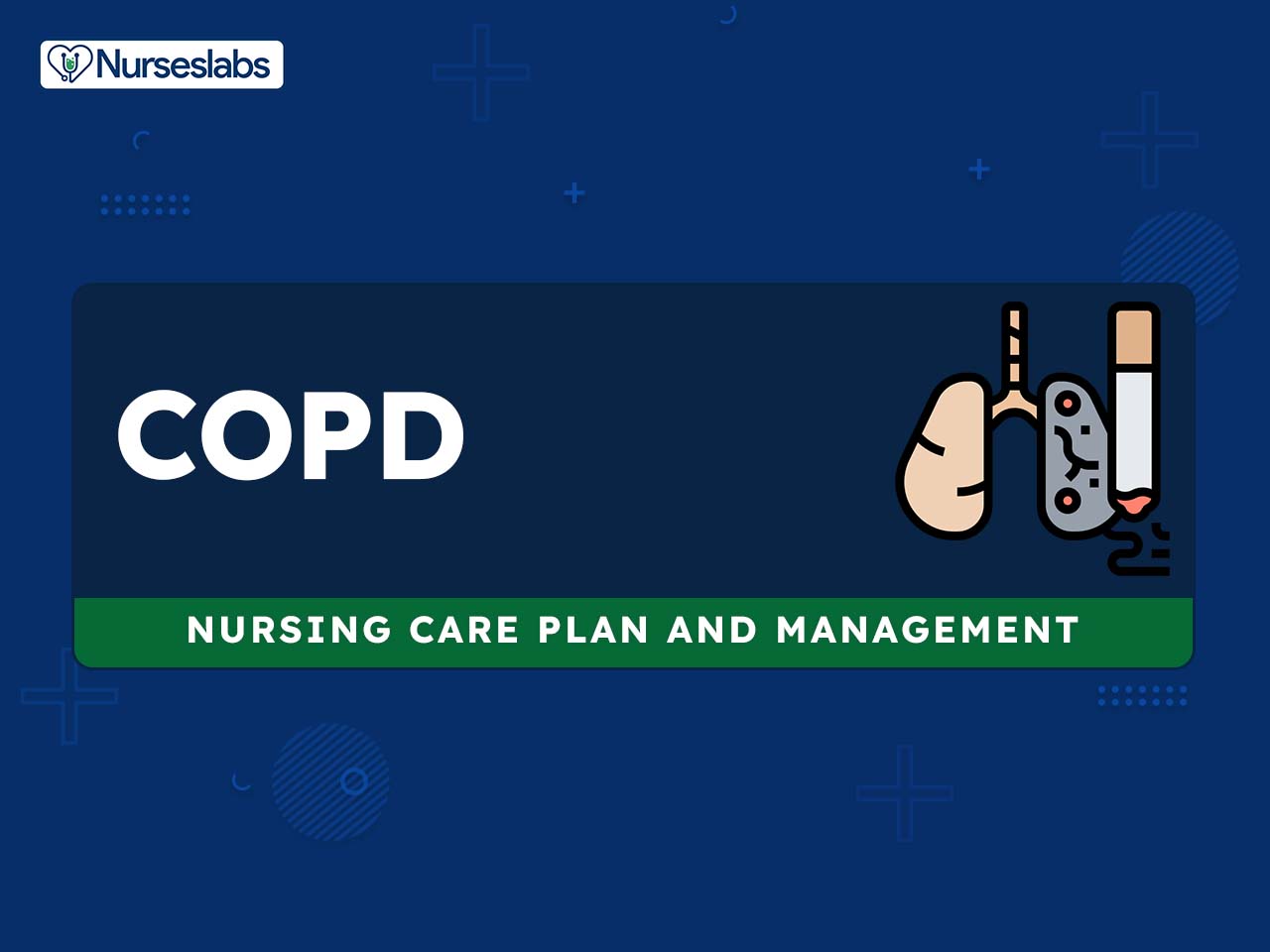
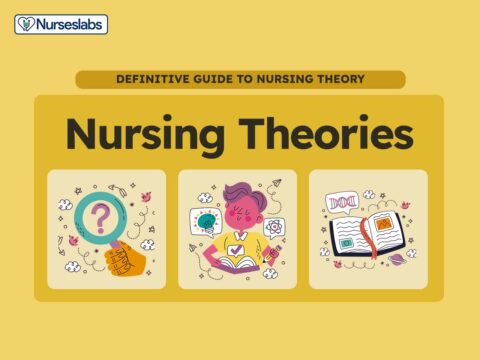
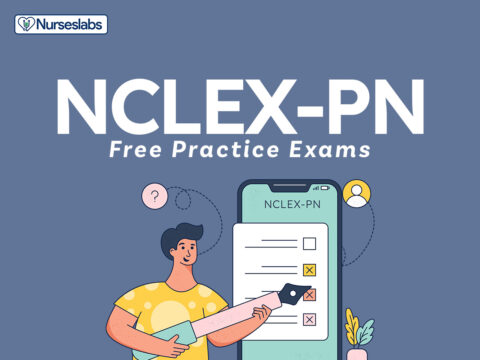
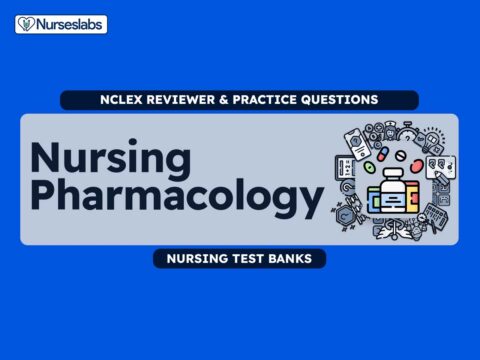
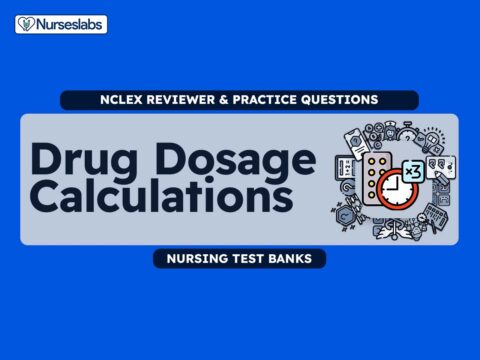
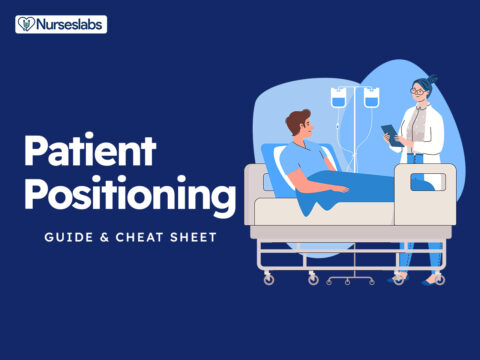



















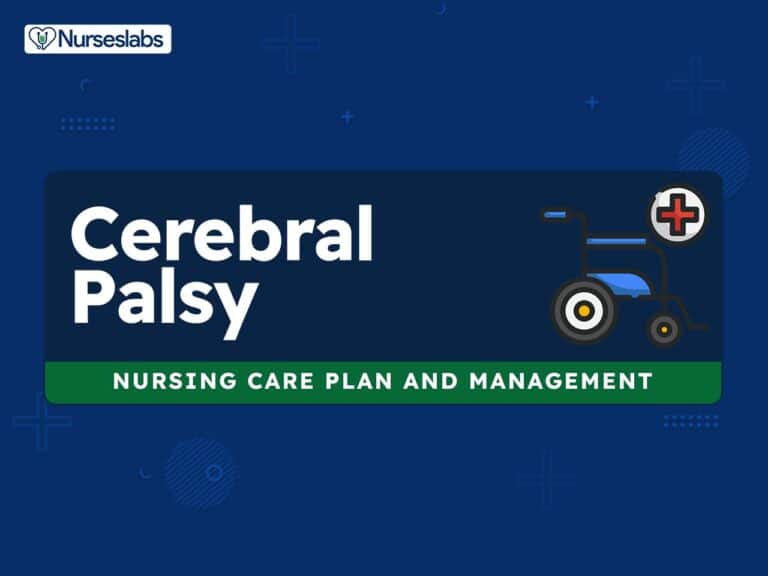
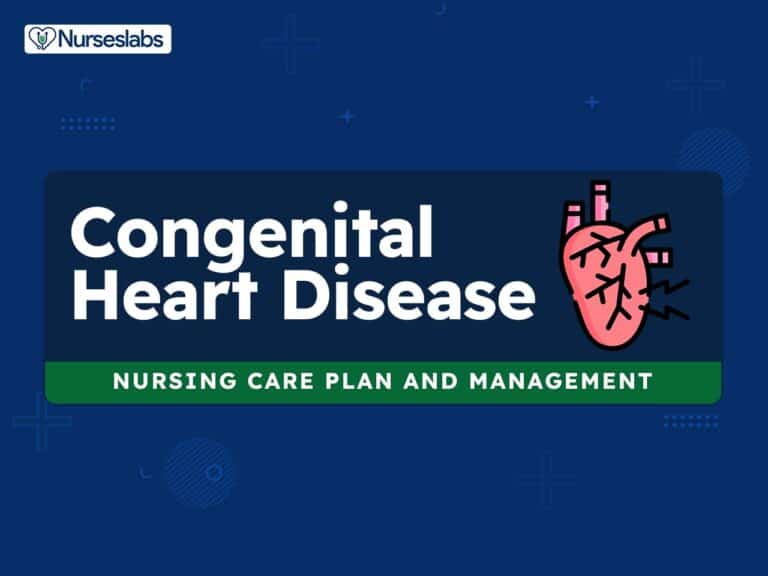

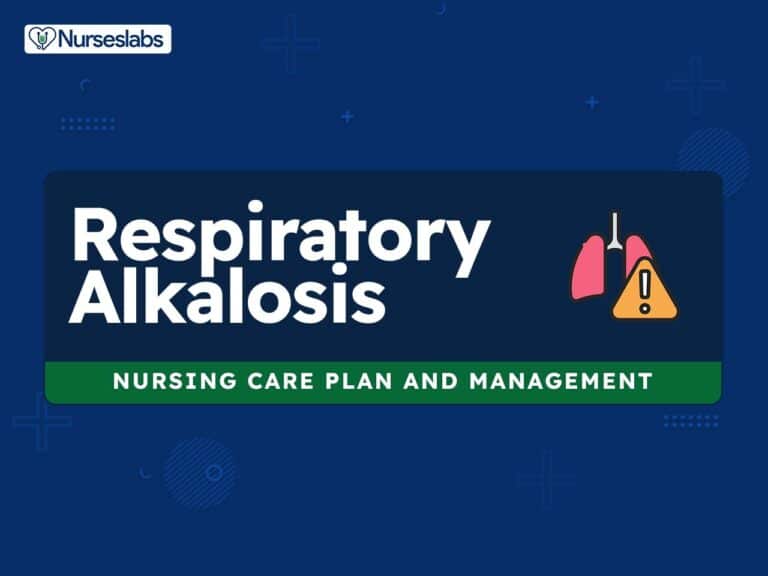
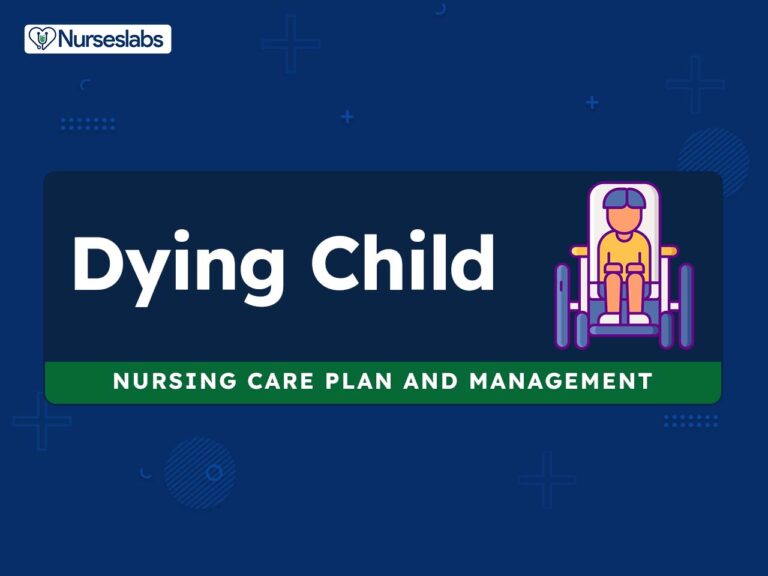

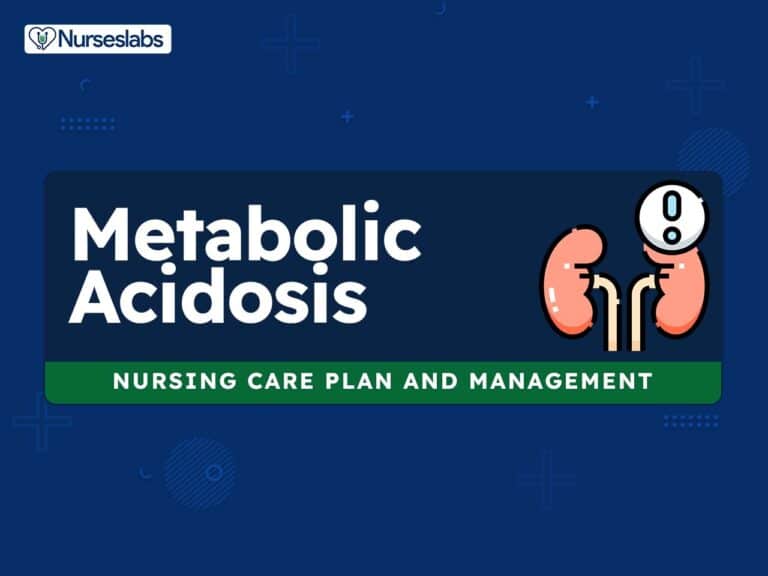



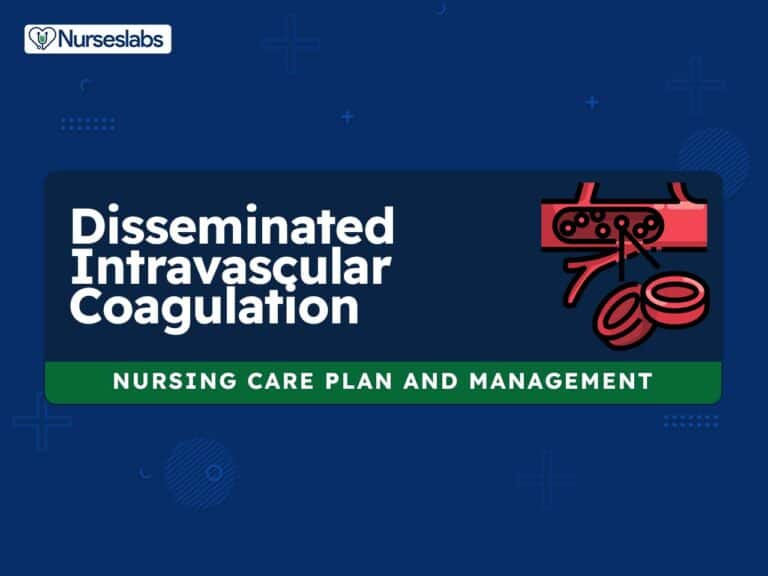
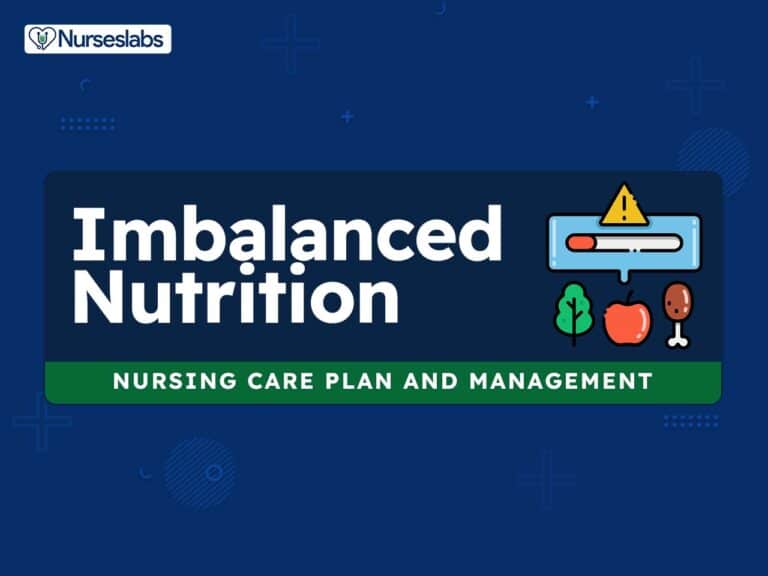
Leave a Comment